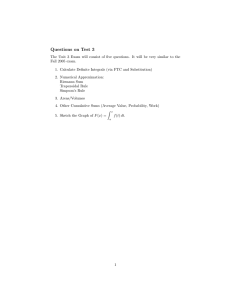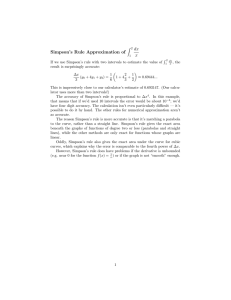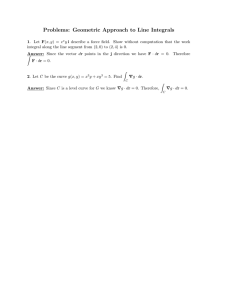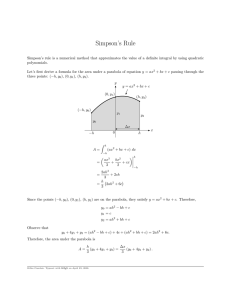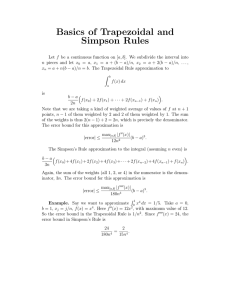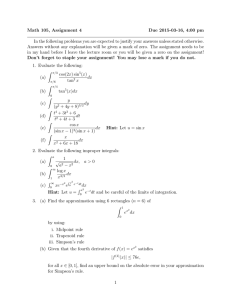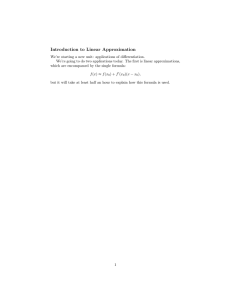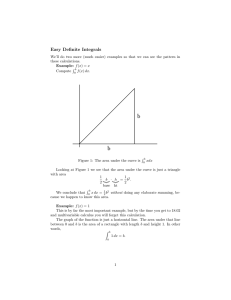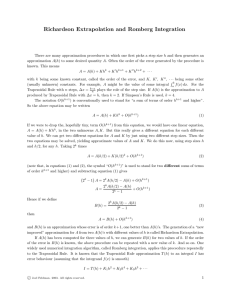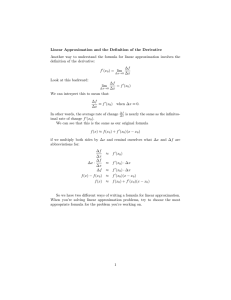Simpson’s Rule
advertisement
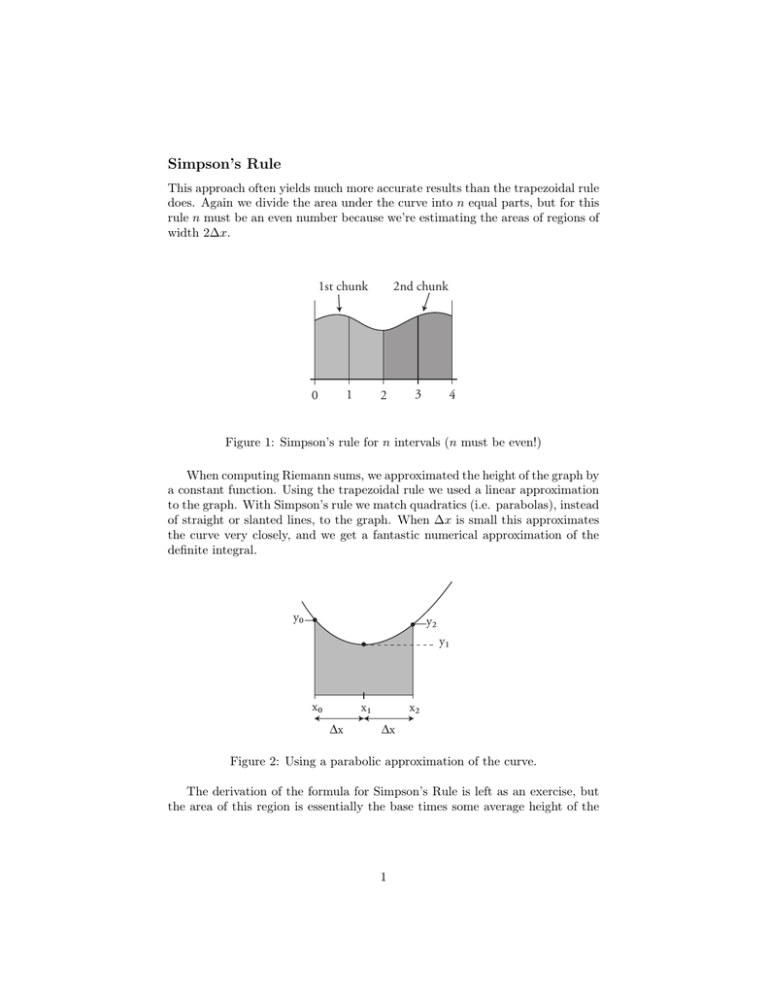
Simpson’s Rule This approach often yields much more accurate results than the trapezoidal rule does. Again we divide the area under the curve into n equal parts, but for this rule n must be an even number because we’re estimating the areas of regions of width 2Δx. 1st chunk 1 0 2nd chunk 2 3 4 Figure 1: Simpson’s rule for n intervals (n must be even!) When computing Riemann sums, we approximated the height of the graph by a constant function. Using the trapezoidal rule we used a linear approximation to the graph. With Simpson’s rule we match quadratics (i.e. parabolas), instead of straight or slanted lines, to the graph. When Δx is small this approximates the curve very closely, and we get a fantastic numerical approximation of the definite integral. y₀ y₂ y₁ x₀ x₂ x₁ ∆x ∆x Figure 2: Using a parabolic approximation of the curve. The derivation of the formula for Simpson’s Rule is left as an exercise, but the area of this region is essentially the base times some average height of the 1 graph: � Area = (base)(average height) = (2Δx) yo + 4y1 + y2 6 � . This emphasizes the middle more than the sides, which is consistent with the equations for parabolic approximation. Simpson’s rule gives you the following estimate for the area under the curve: � � 1 Area = (2Δx) [(yo + 4y1 + y2 ) + (y2 + 4y3 + y4 ) + · · · + (· · · yn )] . 6 We can combine terms cients: 1 4 1 1 4 1 1 4 1 4 2 4 1 4 To get the final form of � b f (x)dx ≈ a here by exploiting the following pattern in the coeffi­ 1 1 Simpson’s rule: Δx (yo + 4y1 + 2y2 + 4y3 + 2y4 + · · · + 2yn−2 + 4yn−1 + yn ). 3 2 MIT OpenCourseWare http://ocw.mit.edu 18.01SC Single Variable Calculus�� Fall 2010 �� For information about citing these materials or our Terms of Use, visit: http://ocw.mit.edu/terms.
